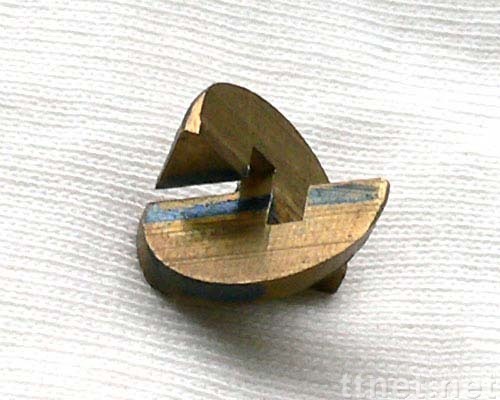空壓機零件
 空壓機零件 空壓機零件的製造與應用:五金及金屬製品加工的詳細探討
空壓機零件 空壓機零件的製造與應用:五金及金屬製品加工的詳細探討
空壓機是現代工業中不可或缺的設備之一,用於提供壓縮空氣以驅動各種機械和工具。空壓機的性能很大程度上取決於其零件的質量和精度。本文將深入探討空壓機零件的製造工藝、常用材料、五金加工技術以及未來發展趨勢。
一、空壓機零件的類型與功能
空壓機主要由以下幾類零件組成:
1. 壓縮機元件
包括活塞、缸套、曲軸等,這些是壓縮機核心的機械部件,負責空氣壓縮過程。
2. 過濾系統
包括吸氣過濾器和油氣分離器,用於清潔空氣和分離油氣,保證壓縮空氣的純淨。
3. 冷卻系統
通常包括風扇和冷卻管,負責冷卻壓縮過程中產生的熱量。
4. 控制系統
包括壓力開關、溫度傳感器和控制面板,這些電子部件用於監控和調節空壓機的運行狀態。
5. 安全裝置
如安全閥和壓力釋放閥,保證設備在安全範圍內運行。
二、空壓機零件的製造技術
空壓機零件的製造涉及多種五金及金屬製品加工技術,主要包括:
1. 車床加工
車床加工是製造圓形或對稱零件的基本方法,如活塞、曲軸等。這種加工技術能夠提供高精度和良好的表面光滑度。
2. 沖壓加工
用於生產金屬板材製成的部件,例如各種支架和固定件。沖壓加工可以大批量生產形狀複雜、尺寸精確的零件。
3. CNC加工
CNC加工技術在製造複雜形狀或需要高精度加工的空壓機零件中非常重要,如精密的閥體和連接桿。
4. 表面處理
表面處理技術包括鍍層、陽極氧化等,這些處理不僅提升零件的抗腐蝕性能,還能提高耐磨性和外觀質感。
三、空壓機零件的材料選擇
材料選擇對空壓機零件的性能和壽命至關重要,常用的材料包括:
1. 鋼材
多用於製造曲軸、活塞桿等承受力大的零件,因其高強度和耐磨性。
2. 鋁合金
用於製造需要輕質化的零件,如某些活塞和機體,鋁合金同時具有良好的導熱性能,有助於改善冷卻效率。
3. 不銹鋼
主要用於制作那些需要抗腐蝕性的零件,如連接管道和某些閥件。
4. 塑料和橡膠
用於製造各種密封件和部分連接件,這些材料具有良好的密封性和抗化學性能。
四、未來發展趨勢
隨著技術的進步和市場需求的變化,空壓機零件製造面臨以下發展趨勢:
1. 自動化和智能化
製造過程中越來越多地應用自動化設備和智能化控制,以提高生產效率和產品質量。
2. 綠色製造
推動更環保的製造過程和材料使用,以減少生產對環境的影響。
3. 材料創新
持續尋求更高性能、更耐用的材料,以應對空壓機在極端條件下的運行需求。
結語
空壓機零件的製造是一個涉及精密工程和材料科學的領域,對工業生產的穩定性和效率起著關鍵作用。隨著技術的不斷進步,製造業需要不斷創新和改進,以滿足市場對高效率、高可靠性空壓機的需求。
Air compressor parts Manufacturing and application of air compressor parts: Detailed discussion of hardware and metal product processing
Air compressor is one of the indispensable equipment in modern industry, used to provide compressed air to drive various machinery and tools. The performance of an air compressor depends largely on the quality and precision of its parts. This article will delve into the manufacturing process, commonly used materials, hardware processing technology and future development trends of air compressor parts.
1. Types and functions of air compressor parts
An air compressor mainly consists of the following types of parts:
1. Compressor components
Including pistons, cylinder liners, crankshafts, etc., these are the core mechanical components of the compressor and are responsible for the air compression process.
2. Filtration system
It includes a suction filter and an oil-gas separator, which are used to clean the air and separate oil and gas to ensure the purity of the compressed air.
3. Cooling system
Typically includes fans and cooling ducts responsible for cooling the heat generated during the compression process.
4. Control system
Including pressure switches, temperature sensors and control panels, these electronic components are used to monitor and regulate the operating status of the air compressor.
5. Safety devices
Such as safety valves and pressure relief valves to ensure that the equipment operates within a safe range.
2. Manufacturing technology of air compressor parts
The manufacturing of air compressor parts involves a variety of hardware and metal product processing technologies, mainly including:
1. Lathe processing
Lathe processing is the basic method for manufacturing round or symmetrical parts, such as pistons, crankshafts, etc. This machining technology provides high precision and good surface smoothness.
2. Stamping processing
For the production of components made of sheet metal, such as various brackets and fasteners. Stamping processing can produce parts with complex shapes and precise dimensions in large quantities.
3. CNC machining
CNC machining technology is very important in manufacturing air compressor parts with complex shapes or requiring high-precision processing, such as precision valve bodies and connecting rods.
4. Surface treatment
Surface treatment technologies include coating, anodizing, etc. These treatments not only improve the corrosion resistance of parts, but also improve wear resistance and appearance.
3. Material selection of air compressor parts
Material selection is crucial to the performance and life of air compressor parts. Commonly used materials include:
1. Steel
It is mostly used to manufacture crankshafts, piston rods and other high-stress parts due to its high strength and wear resistance.
2. Aluminum alloy
Used to manufacture parts that require lightweighting, such as certain pistons and bodies, aluminum alloys also have good thermal conductivity and help improve cooling efficiency.
3. Stainless steel
Mainly used to make parts that require corrosion resistance, such as connecting pipes and certain valves.
4. Plastics and Rubber
Used to make various seals and some connections, these materials have good sealing properties and chemical resistance.
4. Future development trends
With the advancement of technology and changes in market demand, air compressor parts manufacturing is facing the following development trends:
1. Automation and intelligence
Automated equipment and intelligent control are increasingly used in the manufacturing process to improve production efficiency and product quality.
2. Green manufacturing
Promote greener manufacturing processes and material use to reduce the environmental impact of production.
3. Material innovation
We continue to seek higher performance and more durable materials to cope with the operating needs of air compressors under extreme conditions.
Conclusion
The manufacturing of air compressor parts is a field involving precision engineering and material science, which plays a key role in the stability and efficiency of industrial production. With the continuous advancement of technology, the manufacturing industry needs continuous innovation and improvement to meet the market demand for high-efficiency and high-reliability air compressors.